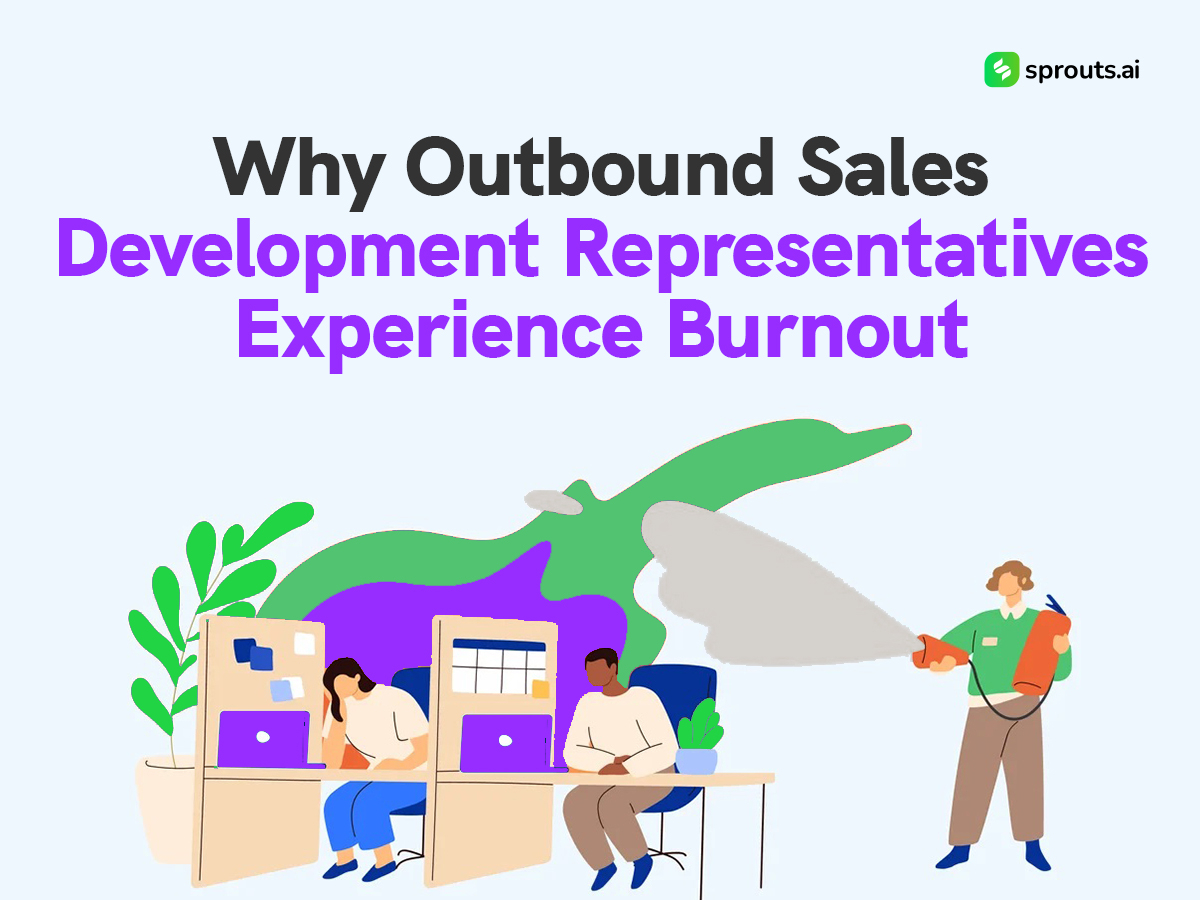Outbound Sales Development Representatives (SDRs) are the vanguard, connecting businesses with potential clients. Yet, a baffling pattern has emerged: why do these SDRs often face burnout within a mere 15 months? This question delves beyond the surface, probing into workplace dynamics, personal motivation, and the intersection of ambitious targets and human resilience. Let’s unearth the factors underlying the 15-month burnout phenomenon among outbound SDRs.
1. The Exciting Start: A Double-Edged Sword
The journey begins with enthusiasm, a fresh role brimming with potential. However, the initial excitement can inadvertently contribute to the burnout timeline. The rush of training, product assimilation, and early achievements can obscure the challenges. The vigor that propels SDRs can metamorphose into a trap, raising the pertinent question: why do outbound sales development representatives burn out in 15 months? Balancing exuberance with pragmatism becomes paramount, necessitating realistic goals and unwavering support.
2. The Quota Quandary
The cornerstone of sales often rests on setting and meeting quotas, yet this practice carries an inherent risk. When steep or ceaselessly escalating, quotas can lead to the ominous 15-month burnout phenomenon. SDRs are caught in a perpetual loop of sustaining performance and surpassing prior benchmarks. This ongoing pressure lays the foundation for burnout, prompting us to wonder: why do outbound sales development representatives burn out in 15 months? Employers must contemplate the sustainability of their expectations.
3. Repetition Breeds Monotony
Cold calls, follow-ups, email outreach – the staples of an SDR’s routine. Yet, familiarity can breed monotony, sapping enthusiasm and stifling creativity. The question emerges again: why do outbound sales development representatives burn out in 15 months? The repetitive nature of tasks necessitates strategies to infuse variety. Nurturing skill diversification and presenting novel challenges can breathe life into roles that would otherwise succumb to monotony.
4. The Human Connection Dilemma
Modern technology facilitates remote interactions, allowing SDRs to engage with potential clients digitally. However, this convenience can inadvertently isolate SDRs from genuine human connections. The pivotal question resurfaces: why do outbound sales development representatives burn out in 15 months? The lack of face-to-face interactions can erode job satisfaction. Video calls and in-person events offer avenues to rekindle these connections and restore a sense of personal engagement.
5. The Support Conundrum
Effective support systems are the backbone of a thriving work environment. In their absence, SDRs can grapple with isolation and aimlessness. The question echoes: why do outbound sales development representatives burn out in 15 months? Regular check-ins, mentorship programs, and structured training can provide the scaffolding needed to prevent burnout and foster professional growth.
6. Balancing Quality and Quantity
Metrics centered on quantity often overshadow the significance of quality interactions. The 15-month burnout cycle is perpetuated when SDRs rush through interactions to meet quotas. This begs the question: why do outbound sales development representatives burn out in 15 months? Shifting focus from quantity to the quality of conversations can alleviate pressure and yield more sustainable results.
7. The Emotional Toll
Daily rejections are integral to an SDR’s life, but the cumulative effect on mental well-being cannot be ignored. The question reverberates: why do outbound sales development representatives burn out in 15 months? The emotional toll of rejection demands acknowledgment. Employers can mitigate this toll by fostering a culture that offers resources for managing stress and promoting mental health.
8. Work-Life Integration
Boundaries between work and personal life blur, particularly in roles demanding constant outreach. The question resurfaces: why do outbound sales development representatives burn out in 15 months? Maintaining a healthy work-life balance is paramount. Encouraging clear boundaries and flexible schedules can prevent burnout and nurture overall well-being.
9. The Road to Longevity
Breaking the cycle of 15-month burnout necessitates a fundamental shift in perspective. Strategies emphasizing skill diversification, continuous learning, and work-life integration hold the key to sustainable success for SDRs. The question remains: why do outbound sales development representatives burn out in 15 months? Recognizing milestones beyond quotas and celebrating holistic growth can infuse renewed vigor into the profession.
The 15-month burnout cycle among outbound SDRs is a multifaceted challenge rooted in unrealistic expectations, repetitive tasks, emotional struggles, and inadequate support. Addressing these factors is imperative for fostering a work environment that nurtures the well-being and longevity of outbound SDRs. As we unravel the complexities, we remember that each individual’s flourishing contributes to collective success, making this endeavor essential for the entire sales landscape.

